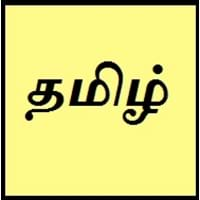Countries
Japan
Malaysia, Mauritius, Puducherry, Singapore, Sri Lanka, Tamil Nadu
National Language
Japan
Singapore, Sri Lanka, Tamil Nadu
Second Language
Not spoken in any of the countries
Andaman and Nicobar Islands, kerala, Puducherry
Speaking Continents
Asia, Pacific
Asia
Minority Language
Palau
Canada, Malaysia, Mauritius, Reunion, Seychelles
Regulated By
Agency for Cultural Affairs (文化庁) at the Ministry of Education
Official language Commission of Government of Tamil Nadu, Thanjavur Tamil University
Interesting Facts
- In Japanese Language, there are 4 different ways to address people: kun, chan, san and sama.
- There are many words in Japanese language which end with vowel letter, which determines the structure and rhythm of Japanese.
- Tamil is the oldest language in the world. Tamil was spoken in South India more than 5000 years ago.
- The first legally recognized Classical Language of India is Tamil.
Similar To
Korean Language
Malayalam
Derived From
Not Available
Not Available
Alphabets in
Japanese-Alphabets.jpg#200
Tamil-Alphabets.jpg#200
Writing Direction
Left-To-Right, Horizontal, Top-To-Bottom
Left-To-Right, Horizontal
Hello
こんにちは (Kon'nichiwa)
வணக்கம் (Vanakkam)
Thank You
ありがとう (Arigatō)
நன்றி (Naṉṟi)
How Are You?
お元気ですか (O genki desu ka?)
நீங்கள் எப்படி இருக்கிறீர்கள்? (Nīṅkaḷ eppaṭi irukkiṟīrkaḷ?)
Good Night
おやすみなさい (Oyasuminasai)
நல்ல இரவு (Good night) / irravu vanakkam (Good night)
Good Evening
こんばんは (Konbanwa)
நல்ல மாலை (Nalla mālai)/ மாலை (irravu vanakkam)
Good Afternoon
こんにちは (Konnichiwa!)
பிற்பகல் வணக்கம் (perpagal vanakkam)
Good Morning
おはよう (Ohayō)
காலை வணக்கம் (Kaalai Vanakkam)
Please
お願いします (Onegaishimasu)
தயவு (Tayavu)
Sorry
ごめんなさい (Gomen'nasai)
மன்னிக்கவும் (Maṉṉikkavum)
Bye
さようなら (Sayōnara)
சென்று வருகிறேன் (Sendru Varukiren)
I Love You
愛しています (Aishiteimasu)
நான் உன்னை காதலிக்கிறேன் (Naan Unnai Kadalikiren)
Excuse Me
すみません (Sumimasen)
என்னை மன்னியுங்கள் (Eṉṉai maṉṉiyuṅkaḷ)
Where They Speak
Kagawa
Kongu
How Many People Speak
Not Available
Dialect 2
Hakata
Madurai Tamil
Where They Speak
Fukuoka
Madurai, South Tamil Nadu
Dialect 3
Kansai
Tirunelveli Tamil
Where They Speak
kansai
South Tamil Nadu, Thoothukudi, Tirunelveli
Second Language Speakers
Not Available
Alternative Names
Not Available
Damulian, Tamal, Tamalsan, Tambul, Tamili
French Name
japonais
tamoul
German Name
Japanisch
Tamil
Pronunciation
/nihoɴɡo/: [nihõŋɡo], [nihõŋŋo]
[t̪ɐmɨɻ]
Ethnicity
Japanese (Yamato)
Tamil people or Tamilans
Language Family
Japonic Family
Dravidian Family
Subgroup
Not Available
Not Available
Branch
Not Available
Not Available
Early Forms
Old Japanese, Early Middle Japanese, Late Middle Japanese and Early Modern Japanese
Old Tamil and Middle Tamil
Standard Forms
Japanese
Modern Tamil
Signed Forms
Signed Japanese
Signed Tamil
Scope
Individual
Individual
ISO 639 6
Not Available
tam
Glottocode
nucl1643
tami1289, oldt1248
Linguasphere
45-CAA-a
tami1289
Language Type
Living
Living
Language Linguistic Typology
Subject-Object-Verb
Subject-Object-Verb
Language Morphological Typology
Agglutinative, Synthetic
Not Available
Japanese and Tamil Greetings
People around the world use different languages to interact with each other. Even if we cannot communicate fluently in any language, it will always be beneficial to know about some of the common greetings or phrases from that language. This is where Japanese and Tamil greetings helps you to understand basic phrases in Japanese and Tamil language. Japanese word for "Hello" is こんにちは (Kon'nichiwa) or Tamil word for "Thank You" is நன்றி (Naṉṟi). Find more of such common Japanese Greetings and Tamil Greetings. These greetings will help you to be more confident when conversing with natives that speak these languages.
Japanese vs Tamil Difficulty
The Japanese vs Tamil difficulty level basically depends on the number of Japanese Alphabets and Tamil Alphabets. Also the number of vowels and consonants in the language plays an important role in deciding the difficulty level of that language. The important points to be considered when we compare Japanese and Tamil are the origin, speaking countries, language family, different greetings, speaking population of these languages. Want to know in Japanese and Tamil, which language is harder to learn? Time required to learn Japanese is 88 weeks while to learn Tamil time required is 44 weeks.





